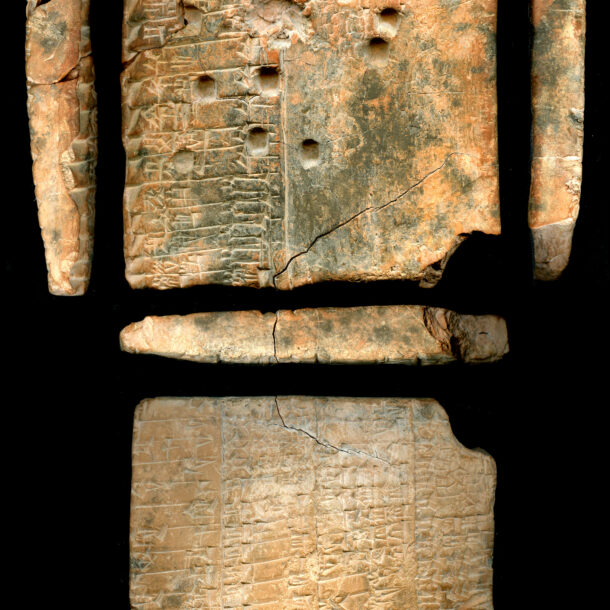Saul Noah Kramer was one of the 20th century’s leading Assyriologists and Sumerian language experts. One of his most important achievements was in pulling on the threads which linked fragments of myth on disparate tablets in museums, private collections, and universities around the world, and embroidering them into a patchwork tapestry that tells many of the earliest tales of human history. But he wasn’t infallible.
A dragon-slaying saint is following me around. From England I moved to Cáceres in the west of Spain, and then on to Catalonia so consecutively I’ve been under the dracocidal patronage of Saint George, San Jorge, and Sant Jordi. Now that I seem to inhabit ancient Mesopotamia for at least a couple of hours each day, I was interested to see if there was a similar mythological dragon-slayer in that world. Well if we take Kramer’s word for it there were three dragon-slayers – all gods and not mere saints. He covers this in his first volume of “Sumerian Mythology”, listing Enki, Ninurta, and Inanna, all of whom battle and defeat the dragon Kur (note for now that Kur is also the name given to netherworld, and to the mountains at the edge of Sumer).
Enki’s story comes at the start of Gilgamesh, Enkidu and the Netherworld where he attacks the Kur after the goddess Erishkigal has been seized and taken to the netherworld. The dragon’s defeat is only implied in this telling, since the story moves quickly on to focus on the hero Gilgamesh. In the second telling, Ninurta, son of Enlil and his talking sword Sharur take the fight to Kur and destroy it, leading the primeval aquifer to rise in a violent flood on the land.
In the third telling we have a rare female dragon-slayer, but Inanna is certainly up to the task. As though giving a demonstration in the Dragons’ Den, she tells what she’s going to do: “The long spear I shall hurl upon it… it shall not rise up.” She does what she says, opening up the “house of battle” (something like a Sumerian can of whoop-ass) on it, destroying it. And then she tells what she’s done, reciting a “paean of self-glorification” from atop of the felled dragon.
The problem with these reconstructions, is that they are the product of one mind, and one that was prone to flights of supposition and invention. This is not surprising, and in fact hardly a criticism, given the faint marks he had to follow, and the huge leaps required to inhabit the minds of the original authors. I’d love to go into the details of Thorkild Jacobsen’s review of Kramer’s volume, as it is a masterpiece of scholarly restraint, pairing criticism with liberal praise and recognition of the importance of the work. Suffice to say, Jacobsen unpicks so much of the stitching of Kramer’s quilt that scarcely a patch of dragon remains. All references to the monster Kur in the first two tales are explained as references to the netherworld itself or to the mountains where the fight was joined. In the third, even Kramer admits that the dragon is intended to represent a foreign land to the northeast of Sumer. It would appear that Kramer was so keen for a personification of the netherworld, he found dragons wherever he looked.
As well as these explicitly mythological texts, dragons also show up in lexical lists of animals like today’s tablet. These lists would blend the real with the fantastical making no apparent distinction. Seeing as how the scribes who compiled these lists were city-dwellers and more accustomed seeing wildlife in its plated form, they’d have had little reason to doubt the existence of the creatures in their shared mythology. Sure they would be unlikely to come across a sea-dragon or a snake with seven heads in their daily lives, but were almost as unlikely to encounter a hippopotamus.
Ancient scribe or modern scholar, all of us bring our biases and preconceptions to everything we do. If we enter uncharted territory thinking “here be dragons”, then dragons we will surely see.

